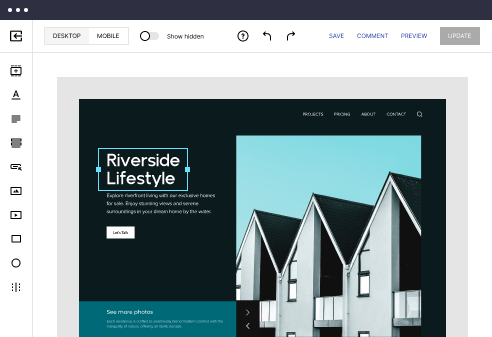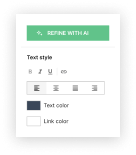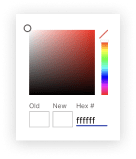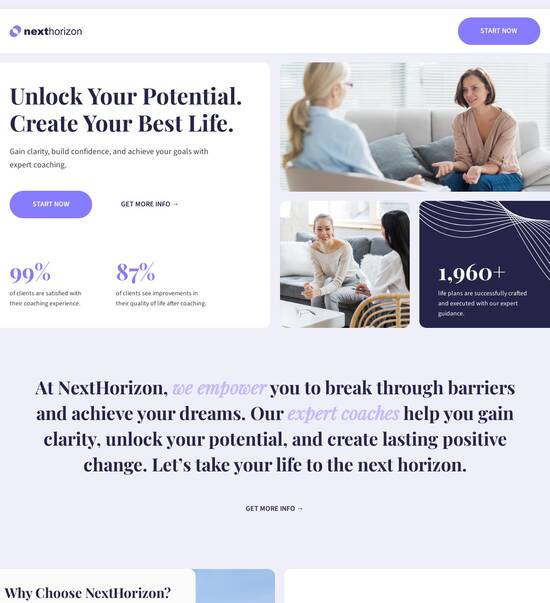
Landing page template for JavaScript developers
Use TemplateAbout template
Attract clients and showcase your skills with style using our landing page templates for JavaScript developers. Let's convert those visitors into clients!
Recommended templates
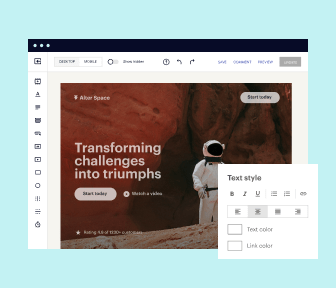
Easy to build without coding
With the intuitive drag-and-drop builder, anyone on your team can create high-converting pages without any knowledge of code or design. Make enhancements to your landing page with custom widgets using Javascript, HTML/CSS, or third-party scripts.
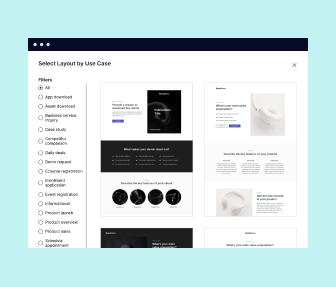
Multiple layouts for any industry and goal
Select from 500+ landing page layouts built to boost conversions across industry-specific scenarios. Customize them by adjusting fonts, adding images, and generating on-brand content with the AI assistant. Quickly scale with Instablocks® and Global Blocks that you can save, reuse, and update globally.
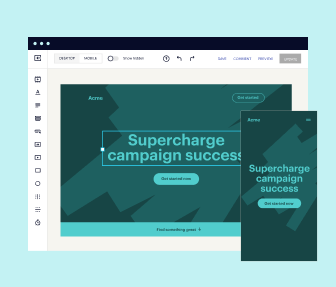
Loads fast and looks polished on any device
Every template is responsive, which means they present professionally on any device and load blazingly fast with our Thor Render Engine. You can also power them up with Google AMP technology to deliver an unparalleled mobile experience and drive higher conversions.
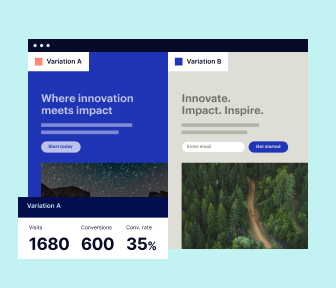
Robust analytics & experimentation
Get real-time updates and reporting across all your devices, showing the number of visitors, conversions, cost-per-visitor, and cost-per-lead. Launch AI-powered experiments, run A/B tests, and use heatmaps to analyze user behavior, then optimize your landing page to maximize conversions.
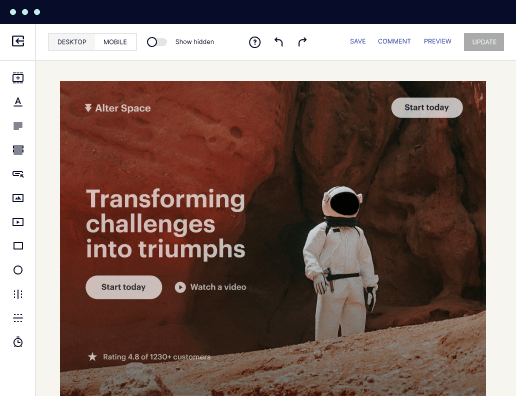
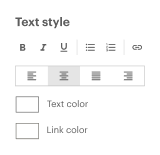
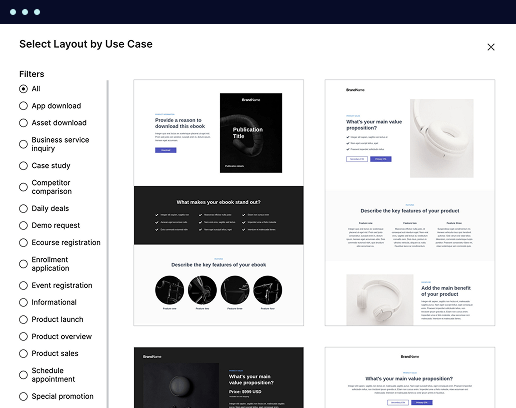
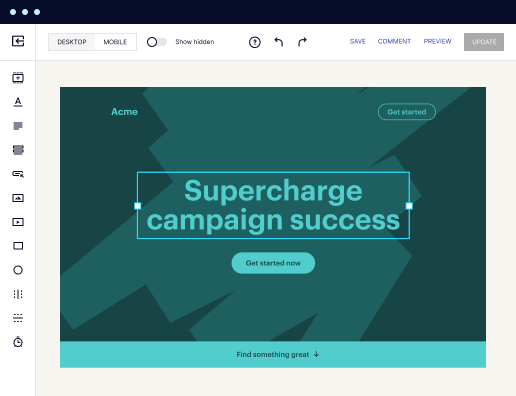
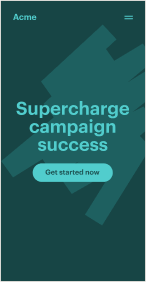
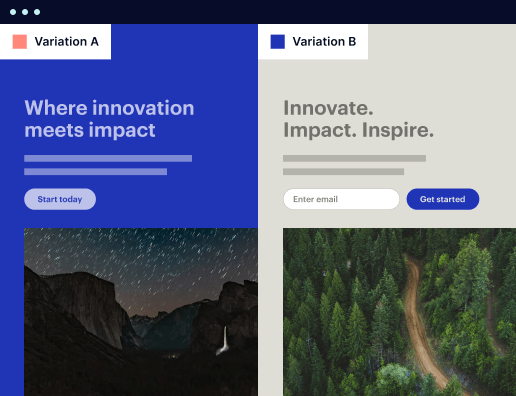
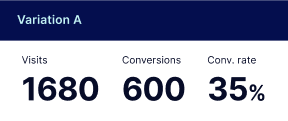
Easy to build without coding
With the intuitive drag-and-drop builder, anyone on your team can create high-converting pages without any knowledge of code or design. Make enhancements to your landing page with custom widgets using Javascript, HTML/CSS, or third-party scripts.
Multiple layouts for any industry and goal
Select from 500+ landing page layouts built to boost conversions across industry-specific scenarios. Customize them by adjusting fonts, adding images, and generating on-brand content with the AI assistant. Quickly scale with Instablocks® and Global Blocks that you can save, reuse, and update globally.
Loads fast and looks polished on any device
Every template is responsive, which means they present professionally on any device and load blazingly fast with our Thor Render Engine.
Robust analytics & experimentation
Get real-time updates and reporting across all your devices, showing the number of visitors, conversions, cost-per-visitor, and cost-per-lead. Launch AI-powered experiments, run A/B tests, and use heatmaps to analyze user behavior, then optimize your landing page to maximize conversions.
All the features you need to build instapage form validation
Explore more featuresLearn how to build landing page javascript
Frequently asked questions about instapage landing page templates
Leading the way in building high-performing landing pages





Create high-converting landing pages with Instapage
Effective landing pages can significantly enhance your digital marketing campaigns and maximize ROI. Leveraging Instapage's powerful features, marketers across diverse industries such as tech, education, and financial services can build tailored pages that not only capture leads but also drive conversions.
Optimize your conversion rates using landing page templates
Instapage’s extensive library of over 100 high-converting landing page templates provides a robust foundation for marketers. Each template is designed with conversion best practices in mind, ready to be customized to meet the unique needs of your audience. Here’s why using these templates makes sense for your digital marketing.
- Pre-built elements: No need for coding expertise — our templates come with lead generation elements already integrated.
- Flexibility and customization: Easily modify layouts and elements to align with your brand identity.
- High compatibility: Optimized for mobile devices and cross-browser compatibility, ensuring a seamless user experience.
Implement dynamic content for personalized experiences
Personalization is key in today's competitive landscape. Instapage allows you to create tailored experiences that resonate with different segments of your audience. Leveraging dynamic text replacement and AdMaps, you can ensure each visitor sees content that's relevant to them.
Utilize built-in optimization tools for continuous improvement
To enhance the effectiveness of your landing pages, Instapage’s optimization features provide real-time feedback. Here’s how you can utilize these tools effectively:
- A/B testing: Test different versions of your landing pages to identify which elements drive better results.
- Heatmaps: Analyze visitor behavior to understand where users click and how they navigate your page.
- Analytics dashboards: Monitor performance metrics in real-time for informed decision-making.
Collaborate for rapid execution and feedback
Collaboration tools streamline the process of getting your landing pages to market. With features for instant feedback and real-time edits, teams can work together efficiently, ensuring that every landing page achieves its full potential.
- Instant feedback loops: Allow stakeholders to provide immediate input on design and content.
- Secure sharing options: Easily share pages with clients or external stakeholders for collaborative reviews.
- Faster turnaround: Enhances speed to market by reducing the time spent on revisions.
By leveraging Instapage's robust features, marketers can create highly effective landing pages that accelerate lead generation and drive conversions.
Get started with Instapage today to transform your digital marketing campaigns and maximize your ROI. Discover the power of personalized landing pages designed specifically for your unique audiences.
People also ask about Landing page template for JavaScript developers
Unleashing the Potential of Landing Page Templates for JavaScript Developers
Understanding the landscape of landing pages for developers
Landing pages serve a pivotal role in the digital ecosystem, functioning as the first interactions users have with a brand or product. They are designed with a singular focus: to encourage user actions such as signing up for a newsletter or making a purchase. In a world where the average attention span is rapidly declining, the efficacy of a landing page can significantly impact conversion rates. Effective landing pages can achieve conversion rates of 5% to 15%, depending on industry and execution, making this a vital area for developers to master.
Current trends show that landing pages are increasingly leaning towards minimalistic design, where the emphasis is placed on clarity and usability. This trend focuses on delivering essential information succinctly while removing unnecessary distractions. Moreover, the rise of interactive elements enhances user engagement, allowing developers to build a more immersive experience. Features such as animated transitions, dynamic form validations, and real-time updates created through JavaScript make these pages not just informative but also enjoyable to interact with.
Tailored landing page templates for JavaScript developers
For JavaScript developers, choosing the right landing page template is essential. A great landing page template must have key features like responsiveness, allowing for optimal viewing on varying devices. Customization is also crucial; developers should be able to tweak layouts and functionalities to fit their specific needs. Compatibility with modern frameworks such as React, Vue.js, and Next.js is equally important, as these frameworks can enhance the performance and functionality of the landing page.
JavaScript plays a fundamental role in enhancing landing page functionality. Client-side scripting is vital for creating interactive features like instant data validations or form submissions without a full page reload. By leveraging AJAX, developers can load dynamic content sections seamlessly, improving the user experience significantly. When JavaScript is integrated effectively, it provides a smoother interaction that keeps users engaged and encourages them to follow through with the desired action.
The power of CMS integration for seamless management
Content Management Systems (CMS) like WordPress, Ghost, and Contentful can elevate the process of landing page creation. They simplify the management of content, allowing non-technical marketers to modify and update landing pages without needing deep programming knowledge. By utilizing a CMS, developers can focus more on the functionality and layout, while marketers can handle the text, images, and other media seamlessly.
One of the best practices for creating dynamic landing pages within a CMS involves establishing reusable templates. This not only saves time when setting up new pages but also ensures design consistency across different campaigns. Additionally, plugins can enhance the landing page’s functionality by including tools for SEO optimization and analytics, which are essential for tracking user engagement and performance.
Selecting the right template: What developers should look for
When selecting a landing page template, developers should focus on several key elements. First, a strong visual hierarchy is crucial for guiding users towards the desired action; hence, intuitive layouts that prioritize the call-to-action buttons will generally perform better. Furthermore, clarity in messaging assures users understand what is being offered and what action is expected from them.
Customizability is another must-have for developers. A flexible template should allow easy adjustments in layout, colors, and typography to match the brand's identity. Additionally, integrating popular JavaScript libraries, such as jQuery for simpler DOM manipulations or GSAP for sophisticated animations, can significantly enhance the user experience and engagement levels. Evaluating the ease with which these integrations can be achieved will ultimately determine the effectiveness of the chosen template.
Leveraging Next.js and Tailwind CSS for innovative landing pages
Next.js has emerged as a favored framework for modern web development, and there are compelling reasons for this trend. For landing pages, one of its significant advantages is the capacity to create server-side rendered (SSR) pages. This greatly improves load time, which directly correlates with user retention and conversion rates. Additionally, Next.js simplifies the process of code splitting, making it easier to manage resources efficiently.
On the other hand, Tailwind CSS offers a utility-first approach to styling that allows developers to tailor the design without having to write verbose CSS code. This methodology promotes rapid development while ensuring the final product is highly customizable. For instance, creating a landing page using Tailwind’s utility classes can result in a highly responsive design that not only looks good on different screen sizes but also adapts based on user interaction, which is key to enhancing user experience.
Creating your first landing page: A step-by-step guide
To begin creating a landing page, developers should first define the project scope and goals. This involves identifying the target audience and specifying the objectives of the page. For instance, is the aim to collect leads, promote a specific product, or enhance brand awareness? Setting clear intentions will guide the design and content of the landing page.
After establishing goals, the next step is selecting a suitable template. This includes comparing landing page templates that cater to developers, particularly those featuring Next.js paired with Tailwind. Additionally, community favorites should be highlighted, showcasing innovative designs that have proven successful in achieving high conversion rates. Once a template is chosen, the integration of JavaScript enhancements, such as dynamic content loading through hooks in React or form validation scripts, will enrich the user experience.
Optimization techniques for maximizing landing page performance
To ensure the effectiveness of any landing page, optimizing its performance through A/B testing is essential. This method involves creating two versions of the page, each with slight variations, to analyze which performs better. By collecting data on user interactions, developers can make informed design and content decisions to enhance conversion rates continually.
Another critical area to focus on is adhering to SEO best practices. Proper use of meta tags and relevant keyword integration ensures the landing page can be effectively indexed by search engines. Additionally, optimizing load times and ensuring mobile-friendliness are integral to keeping bounce rates low and ensuring users have a positive experience regardless of the device they use.
Case studies: Successful landing page implementations
Analyzing successful landing pages in the developer community provides valuable insights into effective practices. For instance, pages that harness the power of simple yet impactful design tend to achieve higher conversion rates. A breakdown of these high-conversion templates often reveals key techniques, such as compelling headlines, persuasive copy, and strong visual elements that align with the target audience's expectations. By studying such case studies, developers can learn critical lessons on what works and what doesn’t.
Furthermore, real-life implementations of landing pages frequently underscore the importance of user feedback. Pages that adapt based on analytics and user interactions have shown to perform significantly better, as they continually evolve to meet the needs of users. This adaptability not only boosts conversions but also fosters greater trust and loyalty from visitors.
Future trends in landing page development for web developers
Emerging technologies are continuously shaping the landscape of landing page design. Artificial intelligence (AI) and machine learning are significant influences that promise to create more personalized user experiences based on behavioral data. As these technologies advance, landing pages will become increasingly adept at tailoring content to individual user preferences, ultimately driving higher engagement and conversions.
Staying ahead of trends is crucial for developers. Utilizing tools that facilitate the development and optimization process will be essential. Engaging with communities and forums can also provide ongoing support, enabling developers to share insights and learn from one another in this rapidly evolving space. Keeping a finger on the pulse of industry trends will ensure developers can continue to deliver impactful landing pages that meet user demands and expectations.
Practical tips for sustained success in landing page development
Iteration and feedback are the cornerstones of a successful landing page. Engaging with users and gathering insights can provide developers with actionable data to inform updates and changes. By continuously revisiting the designs based on user interaction and feedback, developers can fine-tune their pages to better resonate with their audience, increasing their effectiveness over time.
In addition to refining existing pages, building a portfolio of landing page templates can significantly enhance a developer's credibility. Documenting and showcasing work not only displays skill but also informs potential clients or employers of the developer's capabilities. Leveraging social media and developer networks can elevate visibility and open doors to collaboration opportunities, further driving success in landing page development.
Ready to skyrocket conversions?
Supercharge your ad campaigns with high-performing landing pages
Get started